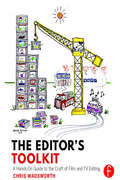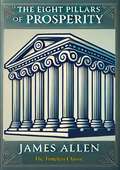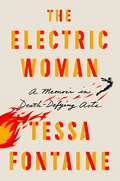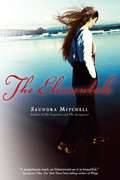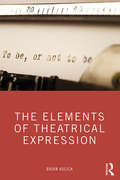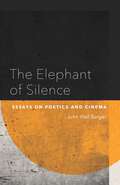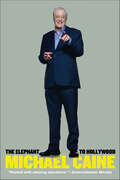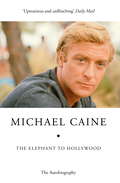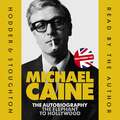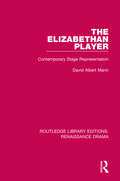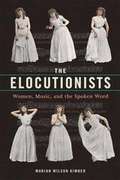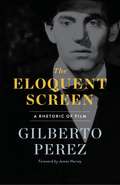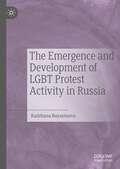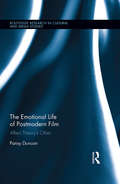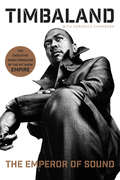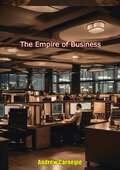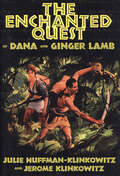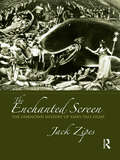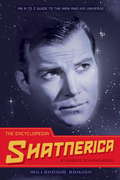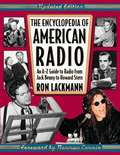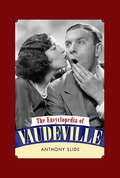- Table View
- List View
The Editor's Toolkit: A Hands-On Guide to the Craft of Film and TV Editing
by Chris WadsworthThe Editor's Toolkit: A Hands-On Guide to the Craft of Film and TV Editing is a tutorial-based introduction to the craft of editing. Today's process of media editing is fast and competitive, making this guide a necessity for anyone looking to break into the business. Here, Chris Wadsworth provides 52 media-based examples for you to put together, with the benefit of seeing what he did with those same exercises, giving you essential feedback to improve your technique and learn the tricks of the trade. Accessible and to-the-point, the primer is a must-read for anyone looking to learn both the art and technique of editing. This 4-color guide features: Examples from the world of film and TV that show how even the greatest directors employ the same techniques in their productions that are mentioned in this guide A look at CV’s and the right attitudes that will give you the best chance at breaking into the editing world Intensive sections about the way music and sound editing can shape the entire production A companion website featuring video and other media that you can edit on your own, each featuring examples of cuts and techniques discussed in the book as well as a discussion forum.
The Eight Pillars of Prosperity: The Collected New Thought Wisdom Of James Allen And Christian D. Larson
by James AllenJames Allen’s "The Eight Pillars of Prosperity" is a timeless classic that offers profound insights and practical wisdom on achieving lasting success and fulfillment. Building on the philosophical foundations laid in his previous works, Allen presents a comprehensive guide to the principles that underpin true prosperity, both materially and spiritually.In this inspirational book, Allen identifies and elaborates on eight essential pillars that form the foundation of a prosperous life: Energy, Economy, Integrity, System, Sympathy, Sincerity, Impartiality, and Self-reliance.1.—Energy: Allen emphasizes the importance of vitality and purposeful action in pursuing one’s goals. He encourages readers to harness their inner strength and enthusiasm to drive their efforts and overcome obstacles.2—Economy: This pillar highlights the value of prudence and wise management of resources. Allen advocates for a balanced approach to wealth, where saving and spending are done thoughtfully and intentionally.3—Integrity: Allen underscores the critical role of honesty and moral uprightness in building a reputable and trustworthy character. He believes that true success is impossible without a foundation of integrity.4—System: Organization and efficiency are key to achieving lasting success. Allen advises readers to develop systematic approaches to their work and daily routines to maximize productivity and minimize waste.5—Sympathy: Compassion and empathy towards others foster harmonious relationships and a supportive community. Allen encourages readers to cultivate a genuine concern for the well-being of others.6—Sincerity: Authenticity and transparency in all dealings are essential for building trust and respect. Allen stresses the importance of being true to oneself and others.7—Impartiality: Fairness and justice should guide one’s actions and decisions. Allen advocates for treating everyone with equal respect and consideration.8—Self-reliance: Confidence in one’s abilities and the courage to act independently are crucial for personal growth and success. Allen encourages readers to trust in their own judgment and capabilities.
The Electric Woman: A Memoir in Death-Defying Acts
by Tessa Fontaine<p>Tessa Fontaine’s astonishing memoir of pushing past fear, The Electric Woman, follows the author on a life-affirming journey of loss and self-discovery―through her time on the road with the last traveling American sideshow and her relationship with an adventurous, spirited mother. <p>Turns out, one lesson applies to living through illness, keeping the show on the road, letting go of the person you love most, and eating fire: <i>The trick is there is no trick. You eat fire by eating fire.</i> <p>Two journeys―a daughter’s and a mother’s―bear witness to this lesson in The Electric Woman. <p>For three years Tessa Fontaine lived in a constant state of emergency as her mother battled stroke after stroke. But hospitals, wheelchairs, and loss of language couldn’t hold back such a woman; she and her husband would see Italy together, come what may. Thus Fontaine became free to follow her own piper, a literal giant inviting her to “come play” in the World of Wonders, America’s last traveling sideshow. How could she resist? <p>Transformed into an escape artist, a snake charmer, and a high-voltage Electra, Fontaine witnessed the marvels of carnival life: intense camaraderie and heartbreak, the guilty thrill of hard-earned cash exchanged for a peek into the impossible, and, most marvelous of all, the stories carnival folks tell about themselves. Through these, Fontaine trained her body to ignore fear and learned how to keep her heart open in the face of loss. <p>A story for anyone who has ever imagined running away with the circus, wanted to be someone else, or wanted a loved one to live forever, The Electric Woman is ultimately about death-defying acts of all kinds, especially that ever constant: good old-fashioned unconditional love.</p>
The Elementals
by Saundra MitchellKate Witherspoon has lived a bohemian life with her artist parents. In 1917, the new art form of the motion picture is changing entertainment--and Kate is determined to become a director. Meanwhile, midwestern farm boy Julian Birch has inherited the wanderlust that fueled his parents' adventures. A childhood bout with polio has left him crippled, but he refuses to let his disability define him. Strangers driven by a shared vision, Kate and Julian set out separately for Los Angeles, the city of dreams. There, they each struggle to find their independence. When they finally meet, the teenage runaways realize their true magical legacy: the ability to triumph over death, and over time. But as their powerful parents before them learned, all magic comes with a price.on to The Vespertine and The Springsweet, the teenage children of the heroes of the previous novels confront a decades-old tragedy still unfolding. At the crucial moment, will Kate and Julian have the courage to embrace their gifts?
The Elements of Harmony (My Little Pony)
by Brandon T. SniderEverypony is sure to love the abridged, digital-only edition of The Official Guidebook! Inside they will find everything they need to know about the hit TV show, My Little Pony: Friendship is Magic. Character bios and a map of Equestria are just the beginning of this gorgeous book. Don't miss the complete lyrics to all the songs, a collection of Letters to Princess Celestia, and much much more! (Full episode guide excluded from abridged edition.)
The Elements of Theatrical Expression
by Brian KulickThe Elements of Theatrical Expression puts forward 14 essential elements that make up the basic building blocks of theatre. Is theatre a language? Does it have its own unique grammar? And if so, just what would the elements of such a grammar be? Brian Kulick asks readers to think of these elements as the rungs of a ladder, scaling one after the other to arrive at an aerial view of the theatrical landscape. From such a vantage point, one can begin to discern a line of development from the ancient Greeks, through Shakespeare and Chekhov, to a host of our own contemporary authors. He demonstrates how these elements may be transhistorical but are far from static, marking out a rich and dynamic theatrical language for a new generation of theatre makers to draw upon. Suitable for directors, actors, writers, dramaturges, and all audiences who yearn for a deeper understanding of theatre, The Elements of Theatrical Expression equips its readers with the knowledge that they need to see and hear theatre in new and more daring ways.
The Elephant of Silence: Essays on Poetics and Cinema
by John Wall Barger“A poem is an act of faith because the poet believes in it,” contends John Wall Barger in The Elephant of Silence, a collection of essays exploring forms of knowing (and not knowing) that awaken a poetic mind. By considering poetry, film, and the intersections among aesthetic moments and our lives, Barger illuminates the foundations of poetic craft but also probes how to be alive, creative, and open in the world. Each piece investigates unanswerable questions and indefinable words: Lorca’s duende, Nabokov’s poshlost, Bashō’s underglimmer, Huizinga’s ludic, Tarkovsky’s Zona. Influenced by poets such as Glück and Ruefle, and filmmakers such as Kubrick and Lynch, Barger writes—first always sharing his own personal life stories—on the nature of perception, experience, and the human mind. With lyric eloquence and disarming candor, The Elephant of Silence tackles how to live an imaginative life, how to gravitate toward the silence from which art comes, and how the mystical is also the everyday.
The Elephant to Hollywood
by Michael CaineCharming, engaging, and surprisingly forthright, Michael Caine gives us his insider's view of Hollywood and the story of his brilliant second actWhen he was in his late fifties, Michael Caine believed his glamorous, rags-to-riches Hollywood career had come to an end. The scripts being sent his way were worse and worse. When one script really disappointed, he called the producer to complain about the part. The producer said, "No, no, we don't want you for the lover, we want you for the father." Salvation came in the unlikely form of his old friend Jack Nicholson, who convinced him to give acting one more shot. What followed was not only an incredible personal transformation but also one of the most radical comebacks in film history. Learning to accept his new role both on camera and in his own life, Caine went on to win his second Oscar, be knighted by the queen, and deliver some of his best performances to date. Now he shares the spectacular story of his life, from his humble upbringing in London's poverty-stricken Elephant and Castle, his military service, touching marriage and family life, and lively adventures with friends, to legendary meetings with fellow stars, forays as a restaurateur, and hilarious off-screen encounters from his glittering five-decade career. Caine's The Elephant to Hollywood brings his gift for storytelling and his insider's view to a tale that is funny, warm, and deeply honest.
The Elephant to Hollywood: Michael Caine's most up-to-date, definitive, bestselling autobiography
by Michael Caine'Uproarious and unflinching' Mail on Sunday'A truly incredible life story' The Sun'Most memorable . . . told in a voice as distinctive as his spoken one' Independent'Brims with his gift for genial anecdote'The Sunday Times* * *From the author of the bestselling Blowing the Bloody Doors Off, the original, definitive autobiography of British screen icon and legend Sir Michael Caine. It's been a long journey for Maurice Micklewhite - born with rickets in London's poverty-stricken Elephant & Castle - to the bright lights of Hollywood. With a glittering career spanning more than five decades and starring roles which have earned him two Oscars, a knighthood, and an iconic place in the Hollywood pantheon, the man now known to us as Michael Caine looks back over it all. Funny, warm, honest, Caine brings us his insider's view of Hollywood (where there's neither holly nor woods). He recalls the films, the legendary stars, the off-screen moments with a gift for story-telling only equalled by David Niven. Hollywood has been his home and his playground. But England is where his heart lies. And where he blames the French for the abundance of snails in his garden. A plaque now celebrates him at the Elephant in London. His handprint is one of only 200 since 1927 to decorate the hallowed pavement outside that mecca of Hollywood stars, Grauman's Chinese Theatre. A very British star, The Elephant to Hollywood is the remarkable full circle of Michael Caine's life.
The Elephant to Hollywood: Michael Caine's most up-to-date, definitive, bestselling autobiography
by Michael Caine'Uproarious and unflinching' Mail on Sunday'A truly incredible life story' The Sun'Most memorable . . . told in a voice as distinctive as his spoken one' Independent'Brims with his gift for genial anecdote' The Sunday Times* * *From the author of the bestselling Blowing the Bloody Doors Off, the original, definitive autobiography of British screen icon and legend Sir Michael Caine. It's been a long journey for Maurice Micklewhite - born with rickets in London's poverty-stricken Elephant & Castle - to the bright lights of Hollywood. With a glittering career spanning more than five decades and starring roles which have earned him two Oscars, a knighthood, and an iconic place in the Hollywood pantheon, the man now known to us as Michael Caine looks back over it all. Funny, warm, honest, Caine brings us his insider's view of Hollywood (where there's neither holly nor woods). He recalls the films, the legendary stars, the off-screen moments with a gift for story-telling only equalled by David Niven. Hollywood has been his home and his playground. But England is where his heart lies. And where he blames the French for the abundance of snails in his garden. A plaque now celebrates him at the Elephant in London. His handprint is one of only 200 since 1927 to decorate the hallowed pavement outside that mecca of Hollywood stars, Grauman's Chinese Theatre. A very British star, The Elephant to Hollywood is the remarkable full circle of Michael Caine's life.
The Elephant to Hollywood: Michael Caine's most up-to-date, definitive, bestselling autobiography
by Michael CaineIt's been a long journey for Maurice Micklewhite - born with rickets in London's poverty-stricken Elephant & Castle - to the bright lights of Hollywood.With a glittering career spanning more than five decades and starring roles which have earned him two Oscars, a knighthood, and an iconic place in the Hollywood pantheon, the man now known to us as Michael Caine looks back over it all.Funny, warm, honest, Caine brings us his insider's view of Hollywood (where there's neither holly nor woods). He recalls the films, the legendary stars, the off-screen moments with a gift for story-telling only equalled by David Niven.Hollywood has been his home and his playground. But England is where his heart lies. And where he blames the French for the abundance of snails in his garden.A plaque now celebrates him at the Elephant in London. His handprint is one of only 200 since 1927 to decorate the hallowed pavement outside that mecca of Hollywood stars, Grauman's Chinese Theatre.A very British star, The Elephant to Hollywood is the remarkable full circle of Michael Caine's life.(P)2010 Hodder & Stoughton
The Elizabethan Player: Contemporary Stage Representation (Routledge Library Editions: Renaissance Drama)
by David Albert MannIn this book, first published in 1991, David Mann argues for more attention to the performer in the study of Elizabethan plays and less concern for their supposed meanings and morals. He concentrates on a collection of extracts from plays which show the Elizabethan actor as a character onstage. He draws from the texts a range of issues concerning performance practice: the nature of iterance; doubling and its implications for presentational acting; the importance of clowning and improvisation; and the effects of audience and venue on the dynamics of performance. The author suggests that the stage representation of players is in part a nostalgic farewell to the passing of an impure but perhaps more vital theatre, and in part an acknowledgement of the threat the adult theatre’s growing sophistication offered to its institutional and adolescent rivals. This title will be of interest to students of Drama and Performance.
The Elocutionists: Women, Music, and the Spoken Word
by Marian Wilson KimberEmerging in the 1850s, elocutionists recited poetry or drama with music to create a new type of performance. The genre--dominated by women--achieved remarkable popularity. Yet the elocutionists and their art fell into total obscurity during the twentieth century. Marian Wilson Kimber restores elocution with music to its rightful place in performance history. Gazing through the lenses of gender and genre, Wilson Kimber argues that these female artists transgressed the previous boundaries between private and public domains. Their performances advocated for female agency while also contributing to a new social construction of gender. Elocutionists, proud purveyors of wholesome entertainment, pointedly contrasted their "acceptable" feminine attributes against those of morally suspect actresses. As Wilson Kimber shows, their influence far outlived their heyday. Women, the primary composers of melodramatic compositions, did nothing less than create a tradition that helped shape the history of American music.
The Eloquent Screen: A Rhetoric of Film
by Gilberto PerezA lifetime of cinematic writing culminates in this breathtaking statement on film&’s unique ability to move usCinema is commonly hailed as &“the universal language,&” but how does it communicate so effortlessly across cultural and linguistic borders? In The Eloquent Screen, influential film critic Gilberto Perez makes a capstone statement on the powerful ways in which film acts on our minds and senses.Drawing on a lifetime&’s worth of viewing and re-viewing, Perez invokes a dizzying array of masters past and present—including Chaplin, Ford, Kiarostami, Eisenstein, Malick, Mizoguchi, Haneke, Hitchcock, and Godard—to explore the transaction between filmmaker and audience. He begins by explaining how film fits into the rhetorical tradition of persuasion and argumentation. Next, Perez explores how film embodies the central tropes of rhetoric––metaphor, metonymy, allegory, and synecdoche––and concludes with a thrilling account of cinema&’s spectacular capacity to create relationships of identification with its audiences. Although there have been several attempts to develop a poetics of film, there has been no sustained attempt to set forth a rhetoric of film—one that bridges aesthetics and audience. Grasping that challenge, The Eloquent Screen shows how cinema, as the consummate contemporary art form, establishes a thoroughly modern rhetoric in which different points of view are brought into clear focus.
The Emergence and Development of LGBT Protest Activity in Russia
by Radzhana BuyantuevaThis book draws on social movement theories and rich empirical data to analyze LGBT protest activity in Russia. It offers a critical examination of the conditions under which LGBT protest activity arises and declines in authoritarian states - including state repression and socio-political discrimination of LGBT people; policy changes that negatively affect the LGBT community; and the motivations of the activists themselves. The author argues that a combination of political opportunity structures, resources, and activists’ perceptions establish necessary conditions for protesting. If any of these factors are negatively affected, then LGBT activists would not be motivated to protest. The volume concludes with a discussion of the implications of Russian LGBT activism in hostile conditions. This book will be of interest to scholars engaged in human rights, social movement studies, gender studies, LGBT rights, and post-Soviet politics and societies.
The Emergence of Cinematic Time: Modernity, Contingency, the Archive
by Mary Ann DoaneHailed as the permanent record of fleeting moments, the cinema emerged at the turn of the nineteenth century as an unprecedented means of capturing time--and this at a moment when disciplines from physics to philosophy, and historical trends from industrialization to the expansion of capitalism, were transforming the very idea of time. In a work that itself captures and reconfigures the passing moments of art, history, and philosophy, Mary Ann Doane shows how the cinema, representing the singular instant of chance and ephemerality in the face of the increasing rationalization and standardization of the day, participated in the structuring of time and contingency in capitalist modernity. At this book's heart is the cinema's essential paradox: temporal continuity conveyed through "stopped time," the rapid succession of still frames or frozen images. Doane explores the role of this paradox, and of notions of the temporal indeterminacy and instability of an image, in shaping not just cinematic time but also modern ideas about continuity and discontinuity, archivability, contingency and determinism, and temporal irreversibility. A compelling meditation on the status of cinematic knowledge, her book is also an inquiry into the very heart and soul of modernity.
The Emotional Life of Postmodern Film: Affect Theory's Other (Routledge Research in Cultural and Media Studies)
by Pansy DuncanEmotion and Postmodernism: is it possible to imagine an odder couple, stranger bedfellows, less bad company? The Emotional Life of Postmodern Film brings this unlikely pair into sustained dialogue, arguing that the interdisciplinary body of scholarship currently emerging under the rubric of "affect theory" may be unexpectedly enriched by an encounter with the field that has become its critical other. Across a series of radical re-reappraisals of canonical postmodern texts, from Fredric Jameson's Postmodernism to David Cronenberg's Crash, Duncan shows that the same postmodern archive that has proven resistant to strongly subject-based and object-oriented emotions, like anger and sadness, proves all too congenial to a series of idiosyncratic, borderline emotions, from knowingness, fascination and bewilderment to boredom and euphoria. The analysis of these emotions, in turn, promises to shake up scholarly consensus on two key counts. On the one hand, it will restructure our sense of the place and role of emotion in a critical enterprise that has long cast it as the stodgy, subjective sister of a supposedly more critically interesting and politically productive affect. On the other, it will transform our perception of postmodernism as a now-historical aesthetic and theoretical moment, teaching us to acknowledge more explicitly and to name more clearly the emotional life that energizes it.
The Emperor of Sound: A Memoir
by Veronica Chambers TimbalandThe long-anticipated inside look at the extraordinary career of the man who brought Sexy Back, the legendary producer in the pantheon of music greats as influential and groundbreaking as Motown’s Berry Gordy and a memoir of the creative process.Hailed by the New Yorker as “the eminence grise behind half of what is great in the Top Forty these days,” world-renowned producer Timbaland has been a fixture on the pop charts, with more top-ten hits than Elvis or the Beatles. An artist whose fans are multi-racial and multi-generational, Timbaland works with the hottest artists, from Mariah Carey and Missy Elliott to Justin Timberlake, Nelly Furtado, Madonna, and his childhood friend, Pharrell Williams. Yet this celebrity is a uniquely private man who shuns parties, stays out of gossip columns, and rarely gives interviews. Deliberately choosing to tour by bus and conspicuously bling-free, he maintains a low-key lifestyle. If he’s not at the recording studio, he is at home with his family.In The Emperor of Sound, Timbaland offers fans an unprecedented look into his life and work. Completely uncensored and totally honest, he reveals the magic behind the music, sharing the various creative impulses that arise while he’s producing, and the layering of sounds that have created dozens of number one hits. Cinematically written, full of revealing anecdotes and reflections from today’s most popular music icons, The Emperor of Sound showcases this master’s artistry and offers an extraordinary glimpse inside this great musical mind.
The Empire of Business
by Andrew CarnegieThis book contains several articles and speeches by Andrew Carnegie, one of the most important industrialists of the end of the 19th and beginning of the 20th century in the United States; the man who would later inspire Napoleon Hill to write "Think and Grow Rich". His ideas on How to win fortune, the importance of wealth, and how young people can succeed, inspired generations. In his philanthropic work, he created and funded a network of public libraries in the United States, and funded places for culture as the Carnegie Hall in New York. A great man, with timeless ideas and wisdom that we can now enjoy.-Print ed.
The Enchanted Quest of Dana and Ginger Lamb
by Jerome Klinkowitz Julie Huffman-klinkowitzBestselling authors, sensational lecturers, documentary filmmakers, amateur archaeologists, spies for FDR—Dana and Ginger Lamb led the life of Indiana Jones long before the movie icon was ever scripted. “We blaze the trail,” Ginger said, “and the scientists follow.” The Enchanted Quest of Dana and Ginger Lamb is the first biography of this captivating, entrepreneurial couple. In southern California, they started married life in 1933 by building a canoe. With only $4.10 in their pockets, they paddled to Central America and through the Panama Canal. Three years later they returned triumphant, bearing a photographic record of the amazing trek that made them famous. After releasing their bestselling book, Enchanted Vagabonds, the two became exactly that. They relentlessly lectured for the public and mooned for the media until they were able to fund more exotic voyages to remote jungles and rivers. So convincing were they on the circuit that their most powerful fan, President Franklin Roosevelt, coerced J. Edgar Hoover into hiring the Lambs as spies in Mexico. After World War II, they launched their Quest for the Lost City, which yielded another book and documentary. Drawing on historical records, the Lambs' books and letters, and recently declassified espionage documents, biographers Julie Huffman-klinkowitz and Jerome Klinkowitz show how the Lambs succeeded in marketing their conquests and films to armchair explorers around the world and how they became, in popular imagination, the quintessential American adventurers.
The Enchanted Screen: The Unknown History of Fairy-Tale Films
by Jack ZipesThe Enchanted Screen: The Unknown History of Fairy-Tale Films offers readers a long overdue, comprehensive look at the rich history of fairy tales and their influence on film, complete with the inclusion of an extensive filmography compiled by the author. With this book, Jack Zipes not only looks at the extensive, illustrious life of fairy tales and cinema, but he also reminds us that, decades before Walt Disney made his mark on the genre, fairy tales were central to the birth of cinema as a medium, as they offered cheap, copyright-free material that could easily engage audiences not only though their familiarity but also through their dazzling special effects. Since the story of fairy tales on film stretches far beyond Disney, this book, therefore, discusses a broad range of films silent, English and non-English, animation, live-action, puppetry, woodcut, montage (Jim Henson), cartoon, and digital. Zipes, thus, gives his readers an in depth look into the special relationship between fairy tales and cinema, and guides us through this vast array of films by tracing the adaptations of major fairy tales like "Little Red Riding Hood," "Cinderella," "Snow White," "Peter Pan," and many more, from their earliest cinematic appearances to today. Full of insight into some of our most beloved films and stories, and boldly illustrated with numerous film stills, The Enchanted Screen, is essential reading for film buffs and fans of the fairy tale alike.
The Encyclopedia Shatnerica: An A to Z Guide to the Man and His Universe
by Robert SchnakenbergTHE DEFINITIVE BIOGRAPHY OF WILLIAM SHATNER IS BACK--IN A SUPER-EXPANDED MILLENNIUM EDITION! This updated edition of The Encyclopedia Shatnerica is your complete guide to the life and work of William Shatner--actor, singer, writer, director, horseman, game show host, and legendary Hollywood lothario. Hop aboard the Starship Irreverent as certified "Shatnerologist" Robert Schnakenberg documents every aspect of The Great One's career, including: * More than fifty years of major film, TV, and stage appearances--from The Twilight Zone and Star Trek to T. J. Hooker and Boston Legal * Shatner's many musical misadventures--including his legendary covers of "Rocket Man" and "Lucy in the Sky with Diamonds" * Scandalous allegations and scathing anecdotes from Star Trek costars Plus more girdle, divorce, and toupee trivia than you can shake a phaser at! Fully updated for the first time in ten years, with all-new material on Denny Crane, Nerine Kidd, Iron Chef USA, and more, The Encyclopedia Shatnerica remains the definitive biography of an entertainment icon.
The Encyclopedia of American Radio: An A-Z Guide to Radio from Jack Benny to Howard Stern
by Ron LackmannRadio shows, personalities, chronology of radio events in the US and Canada, sponsors, vintage radio clubs, stations that feature vintage radio, logs of dramatic anthology shows
The Encyclopedia of Disc Music Boxes 1881-1920: A History, Catalog Raisonné, and Appreciation
by Q. David BowersDisc Music Boxes preceded the phonograph as a way of listening to popular tunes and classical music. They were located in private homes and public places of entertainment. This is an extensive encyclopedia for collectors of these disc music boxes. The DAISY version is considerably indexed for easy navigation.
The Encyclopedia of Vaudeville
by Anthony SlideThe Encyclopedia of Vaudeville provides a unique record of what was once America's preeminent form of popular entertainment from the late 1800s through the early 1930s. It includes entries not only on the entertainers themselves, but also on those who worked behind the scenes, the theatres, genres, and historical terms. Entries on individual vaudevillians include biographical information, samplings of routines and, often, commentary by the performers. Many former vaudevillians were interviewed for the book, including Milton Berle, Block and Sully, Kitty Doner, Fifi D'Orsay, Nick Lucas, Ken Murray, Fayard Nicholas, Olga Petrova, Rose Marie, Arthur Tracy, and Rudy Vallee. Where appropriate, entries also include bibliographies. The volume concludes with a guide to vaudeville resources and a general bibliography. Aside from its reference value, with its more than five hundred entries, The Encyclopedia of Vaudeville discusses the careers of the famous and the forgotten. Many of the vaudevillians here, including Jack Benny, George Burns and Gracie Allen, Jimmy Durante, W. C. Fields, Bert Lahr, and Mae West, are familiar names today, thanks to their continuing careers on screen. At the same time, and given equal coverage, are forgotten acts: legendary female impersonators Bert Savoy and Jay Brennan, the vulgar Eva Tanguay with her billing as “The I Don't Care Girl,” male impersonator Kitty Doner, and a host of “freak” acts.
